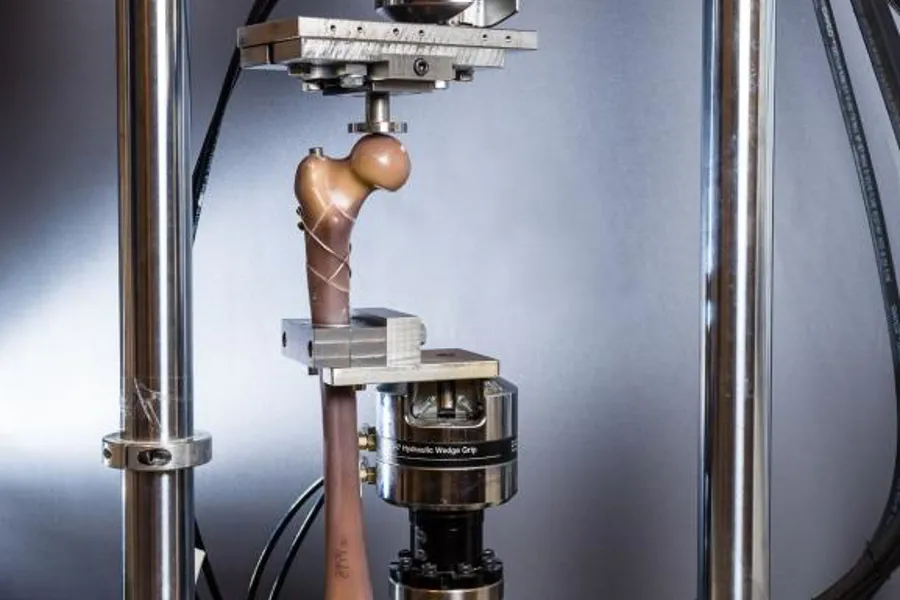Dissertation Jan Egil Brattgjerd
Jan Egil Brattgjerd, a PhD fellow in the Biomechanics Laboratory headed by Lars Nordsletten, successfully defended his thesis Biomechanics of locking plates in femoral neck fixation in January 2021. He described the biomechanical stability of femoral neck fracture fixation with special regard to the novel principle of interlocked pins in a plate developed to promote multi-directional stability and healing. Further aims were to analyse if patient safety requirements were met by investigating the novel implant´s strengths and weaknesses.

Summary by Jan Egil Brattgjerd:
A definite biomechanical impact was detected with increased multi-directional stability without adverse effects in comparison with other relevant conventional fixation methods in a comprehensive ex vivo evaluation. As intended during implant design development, the physical effect justified introducing the novel implant into the clinics.
The profound impact on torsional stability, but also the enhanced bending and compressive stability can be explained by moment of inertia considerations of single beam prisms, where a larger footprint of the bone-implant construct describes the higher resistance to loading. This corresponds with the mechanism of action by interlocked pins to improve load distribution by equal transmission amongst pins from fragile cancellous bone medially in the femoral head to solid cortical bone laterally in the trochanteric area.
The modestly improved compressive stability from dynamic testing may be indicative of the role of the interlocking plate to allow for a stabilising controlled intermediate compression by impaction of the fragments during loading with such an implant.
However,
whether the improved gross stability is sufficient to enhance healing
conditions or affect failure patterns in vivo, will be the topic of forthcoming
clinical trials. So far, the results are promising and the interlocked pins
must be considered a favourable development of the pin concept.
Digital public defence: Jan Egil
Brattgjerd - Institute of Clinical Medicine (uio.no)
OUH - Orthopaedic Surgery
(ous-research.no)